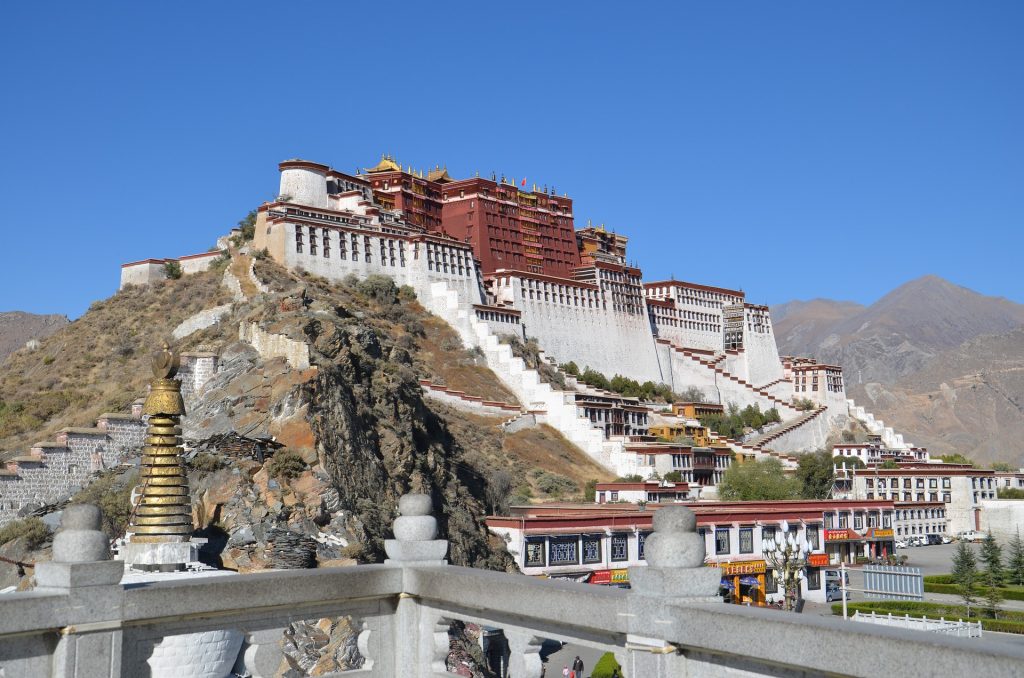 Trip Cost:
Trip Cost:Tibet
Locked away in its Himalayan fortress, Tibet has long exercised a unique hold on the imagination of the West: 'Shangri-La', 'the Land of Snows', 'the Rooftop of the World', Tibet is mysterious in a way that few other places are. Most of Tibet is an immense plateau which lies at altitudes from 4000 to 5000m, but inhabitants tend to cluster in the valleys in the country's east.
Tibet's strategic importance, straddling the Himalaya between China and the Indian subcontinent, made it irresistible to China who invaded in 1950. But Tibetans have never had it easy. Theirs is a harsh environment and human habitation has always been a precarious proposition. Even so, the deliberate cultural strangling inflicted by the Chinese occupiers since 1950 rates as the worst misfortune the inhabitants of the 'Land of Snows' have been forced to endure.
Tibetan Buddhism, which developed out of Indian Tantric Buddhism and the indigenous animistic Bon religion, spread through Tibet by the 7th century. Political differences led to the formation of the Yellow and Red Hat sects, with the Yellow Hats prevailing under the leadership of a succession of Dalai Lama god-kings. Each Dalai Lama is considered the reincarnation of the last, upon whose death the monks search for a newborn child who shows some sign of embodying his predecessor's spirit.
Tibet lies at the centre of Asia, with an area of 2.5 million square kilometers. The earth’s highest mountains, a vast arid plateau and great river valleys make up the physical homeland of 6 million Tibetans. It has an average altitude of 13,000 feet above sea level.
Tibet is comprised of the three provinces of Amdo (now split by China into the provinces of Qinghai, Gansu & Sichuan), Kham (largely incorporated into the Chinese provinces of Sichuan, Yunnan and Qinghai), and U-Tsang (which, together with western Kham, is today referred to by China as the Tibet Autonomous Region).
The Tibet Autonomous Region (TAR) comprises less than half of historic Tibet and was created by China in 1965 for administrative reasons. It is important to note that when Chinese officials and publications use the term “Tibet” they mean only the TAR.
Tibetans use the term Tibet to mean the three provinces described above, i.e., the area traditionally known as Tibet before the 1949-50 invasion.
Despite over 40 years of Chinese occupation of Tibet, the Tibetan people refuse to be conquered and subjugated by China. The present Chinese policy, a combination of demographic and economic manipulation, and discrimination, aims to suppress the Tibetan issue by changing the very character and the identity of Tibet and its people.
Today Tibetans are outnumbered by Han Chinese population in their own homeland.
Facts and Figures
Area: 2.5 million sq. km.
Capital: Lhasa
Population: 6 million Tibetans and an estimated 7.5 million Chinese, most of whom are in Kham and Amdo.
Language: Tibetan (of the Tibeto-Burmese language family). The official language is Chinese.
Staple Food: Tsampa (roasted barley flour)
National Drink: Salted butter tea
Typical Animals: Wild yak, Bharal (blue) sheep, Musk deer, Tibetan antelope, Tibetan gazelle, Kyang (wild ass), Pica
Typical Birds: Black necked crane, Lammergeier, Great crested grebe, Bar-headed goose, Ruddy shel duck, Ibis-bill
Major Environmental Problems: Rampant deforestation in Eastern Tibet, poaching of large mammals
Average Altitude: 14,000 ft.
Highest Mountain: Chomo Langma (Mt. Everest) 29, 028 ft.
Average Rainfall: Varies widely. In the west it is 1 mm in Jan. to 25 mm in July. In the east, it is 25-50 in Jan. and 800 in July
Average Temprature: July 58 f; Jan. 24 f.
Mineral Deposits: Borax, uranium, iron, chromite, gold
Major Rivers: Mekong, Yangtse, Salween, Tsangpo, Yellow
Economy:
Tibetans: predominantly in agriculture and animal husbandry.
Chinese: predominantly in government, commerce and the service sector.
Provinces: U-Tsang (Central Tibet), Amdo (N.E. Tibet), Kham (S.E. Tibet)
Bordering Countries: India, Nepal, Bhutan, Burma, China
National Flag: Snow lions with red and blue rays. Outlawed in Tibet.
Religious Leader: The 14th Dalai Lama. In exile in Dharamsala, India.
Government: IN EXILE Parliamentary
Government: Communist

